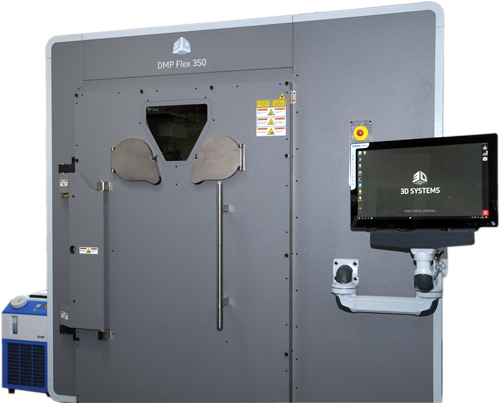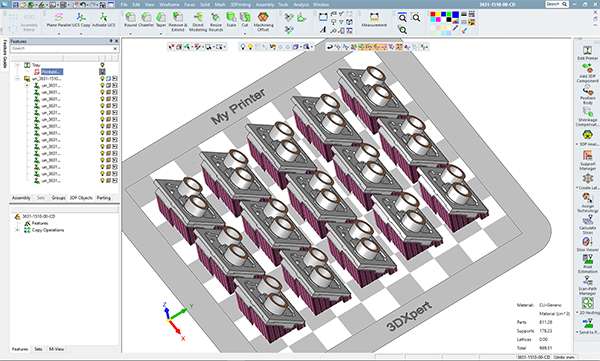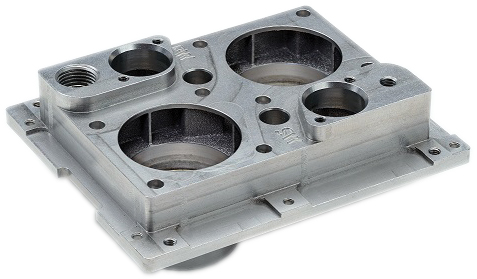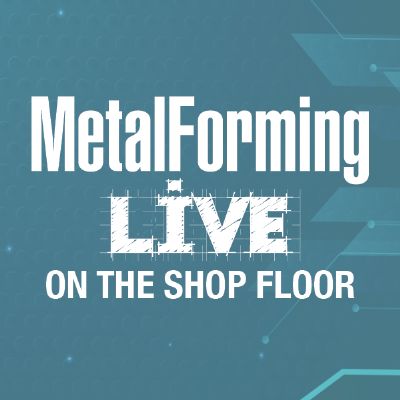New Machine Heralds Entry into Titanium

|
| The new metal printer onsite at Sharon Tuvia is intended to produce topology-optimized titanium brackets for aerospace companies. |
Eight years ago, Sharon Tuvia, after researching AM, brought in its first metal 3D printer and since has added two more, all printing aluminum. Looking to add titanium parts for aerospace and medical applications to its repertoire, the company recently added a fourth: the DMP Flex 350 metal 3D printer from 3D Systems. Succeeding the ProX DMP 320 model, the DMP Flex 350 reportedly enables more efficient production of dense, pure metal parts and includes improved gas-flow technology for enhanced part quality across the entire build area. Additionally, the DMP Flex 350 offers a 15-percent improvement in print productivity over the previous model, according to 3D Systems officials.
3D Systems unveiled the DMP Flex 350 at formnext 2018, where 3D Metal Printing sat down with the Sharon brothers to learn more about Sharon Tuvia’s operations. The printer features a build volume of 275 by 275 by 420 mm with a maximum achievable part size of 275 by 275 by 380 mm using a standard-height build plate of 40 mm. A unique vacuum chamber heavily reduces argon-gas consumption while achieving oxygen levels of less than 25 ppm. This results in exceptionally strong parts of high chemical purity, according to 3D Systems officials. Designed for R&D projects, application development or for serial production, the machine also is scalable for volume part production. Features include quick-swap build modules and rapid powder recycling to help speed production. A central server manages print jobs, materials, settings and maintenance, enabling 24/7 productivity.
Besides the DMP Flex 350, other new additions to the DMP product platform include the Factory 350, with an integrated powder-management system providing sieving and automated powder conveyance in an O2-free atmosphere. If desired, the DMP platform allows Sharon Tuvia to readily scale from the DMP Flex 350 to the DMP Factory 350. Also announced at formnext: the DMP Factory 500, a scalable system developed in partnership with GF Machining Solutions and designed to build metal parts to 500 by 500 by 500 mm. This platform includes GF Machining Solutions’ System 3R referencing and clamping system, with zero-point clamping that enables optimal positioning of the build plate, facilitating a quick transition from the 3D printer to post-processing steps.
In tandem with its new DMP Flex 350, Sharon Tuvia uses 3D Systems’ 3DXpert integrated software for the entire metal-AM workflow, encompassing preparation, simulation, optimization and post-processing operations. Sharon Tuvia also employs the software for its three other metal-printing units. The company brought on the software two years ago, and also has been a long-time user of 3D Systems’ Cimatron CAD/CAM software.
3DXpert 14, the latest version of 3DXpert, focuses on the capabilities required to easily scale up to serial metal-part production, according to 3D Systems officials. Enhanced integrated simulation facilitates more rapid design-to-manufacturing lead time, and the new Engineering Change Order manager enables rapid design changes within the 3D model versus needing to recreate it. Other features include enhanced auto-orientation, new optimized lattice structures and smart production labeling.
Sharon Tuvia also employs DMP Monitoring, a process-monitoring and nondestructive quality-control system that provides data for assessing product quality, and also offers a means of process traceability and documentation.
Better Parts Sell Company on Technology
The company intends to use the DMP Flex 350 to produce topology-optimized titanium brackets for aerospace companies, as well as parts for commercial satellites. Medical parts also are a possibility, reports Yair. 3D Systems is supplying Sharon Tuvia with its LaserForm Ti Gr23 for use on the new machine, with the high quality of final titanium parts leading the company to purchase the equipment and material combo.
“We challenged titanium parts produced on the DMP Flex 350 with a battery of external tests—evaluating elongation, stress, fatigue, microstructure analysis and other factors,” says Ronen. “The LaserForm Ti Gr23 parts performed without parallel. The results were especially extraordinary when checking for lack of fusion (incomplete fusion) as most parts produced using metal 3D printing technologies, we’ve found, will reveal lack of fusion.”
Sharon Tuvia also is impressed by the new machine’s improved gas-flow technology.
“The closed-vacuum-chamber design not only maximizes powder re-use, but also prevents argon-gas bubbles from permeating the part,” Ronen explains. “When parts produced using this technology undergo hot isostatic pressing, quality is comparable to forged parts. Such results are a must for aerospace parts that periodically need to withstand high amounts of pressure.”
Room to Grow
Sharon Tuvia’s management conversed with 3D Systems for 2 yr. before bringing the DMP Flex 350 onboard, making sure that the new printer and materials could meet demand for quality titanium parts, and be scalable for higher-volume projects and new applications. Through the capability and capacity increase delivered by the DMP Flex 350, and efforts to educate potential customers, Yair sees a pathway to greater success for Sharon Tuvia.
“Israel does not represent a big market, so in the 8 yr. since we’ve added metal AM, we’ve been educating our customers about another degree of freedom afforded by AM and its advantages over subtractive manufacturing, including the ability to create lighter structures, optimize topography, introduce lattices and shorten time to market.
“Right now, we are working closely with our current AM customers on new projects and greater opportunities,” he continues. “And, new customers are moving us from only low-quantity batches to mass production. For example, we now supply a healthcare customer with 3000 aluminum heatsink parts per year—we can load a lot of these small parts onto a build plate.”
For a long time, though wanting to enter the market for titanium aerospace and medical parts, Yair did not see ideal results from printing with the material...until now. The company also looks to add ceramics to its AM material roster. These new efforts poise the company to grow, with AM revenue increasing at about a 25-percent annual clip, and helping boost the machining side through finishing and hybrid work.
“Our plan is to increase our additive business to 50 percent within four to five years,” says Yair, by helping its current aluminum customers improve part designs and functionality, and adding new titanium customers, especially in Europe.
That should keep the Sharon family busy, as Yair and Ronen have another brother working for the company, along with two nephews. And, perhaps the biggest fan of AM at Sharon Tuvia is Yair and Ronen’s father, who, at 87 years old, still comes to work every day. His perseverance and enthusiasm, along with the ability to find another way, just like their grandfather did before, provides continued inspiration to the Sharon brothers.
Says Yair, reasoning as to the company’s success and its willingness to adopt new technology and adapt to new markets, “We stand on the shoulders of giants.” 3DMP
See also: 3D Systems, GF Machining Solutions
Technologies:











 Event
Event
